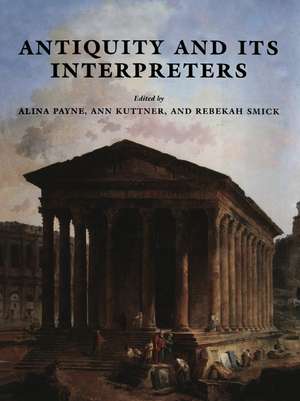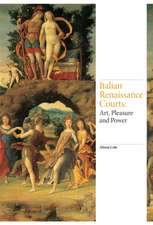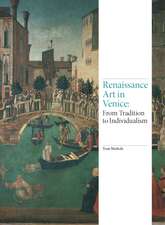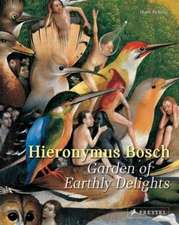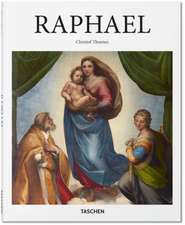Antiquity and its Interpreters
Editat de Alina Payne, Ann Kuttner, Rebekah Smicken Limba Engleză Paperback – 28 mar 2012
| Toate formatele și edițiile | Preț | Express |
|---|---|---|
| Paperback (1) | 338.95 lei 6-8 săpt. | |
| Cambridge University Press – 28 mar 2012 | 338.95 lei 6-8 săpt. | |
| Hardback (1) | 728.82 lei 6-8 săpt. | |
| Cambridge University Press – 12 feb 2000 | 728.82 lei 6-8 săpt. |
Preț: 338.95 lei
Nou
Puncte Express: 508
Preț estimativ în valută:
64.88€ • 70.50$ • 54.53£
64.88€ • 70.50$ • 54.53£
Carte tipărită la comandă
Livrare economică 21 aprilie-05 mai
Preluare comenzi: 021 569.72.76
Specificații
ISBN-13: 9781107403857
ISBN-10: 1107403855
Pagini: 342
Dimensiuni: 210 x 279 x 18 mm
Greutate: 0.77 kg
Editura: Cambridge University Press
Colecția Cambridge University Press
Locul publicării:New York, United States
ISBN-10: 1107403855
Pagini: 342
Dimensiuni: 210 x 279 x 18 mm
Greutate: 0.77 kg
Editura: Cambridge University Press
Colecția Cambridge University Press
Locul publicării:New York, United States
Cuprins
Introduction; Part I. Inhabiting History: 1. Historical self-definition; 1.1 Imitation James Ackerman; 1.2 P. Petrarch and the broken city David Galbraith; 1.3 Acquiring a classical past: historical appropriation in Renaissance Venice Patricia Fortini Brown; 1.4 Ordering history and style: Georgio Vasari on the art of history Philip Sohm; 2. Historical continuities; 2.1 Renaissance and real estate: the medieval afterlife of the Temple of Diana in Nimes Sheila Bonde; 2.2 Imaginary architecture and antiquity: the fountain of Venus in Francesco Colonna's Hypnerotomachia Poliphili Martine Furno II; 2.3 Antiquity consumed: transformations at San Marco, Venice Marina Belozerskaya and Kenneth Lapatin; Part II. Cultural Pursued: 3. The heritage of Zeuxis: painting, rhetoric and history Leonard Barkan; 3.1 Mind's passion: conjugating rationality and sensuality in neo-platonic interpretations of Italian Renaissance art Julia Branna Perlman; 3.2 The transformation of ancient landscape through the ideology of Christian reform Nicola Courtright; 4. The (re)emergence of the aesthetic; 4.1 Ut poesis architectura: Gherardo Spini and Italian archietectural criticism circa 1570 Alina Payne; 4.2 Viewing the art of Michelangelo: visual metaphor in the art critical tradition of the Renaissance Rebekah Smick; 4.3 The body and antiquity in Alberti's art theoretical writings Gerhard Wolf; 4.4 Patterns of transumption in Renaissance architectural theory Christof Thoenes; Part III. Culture Produced: 5. Textual exegesis; 5.1 Pliny's laocoon? Michael Koortbojian; 5.2 Symmetry and eurythmy: classical theory in architecture from Vitruvius to Bernini to the present day Tod Marder; 6. Appropriation contexts: decor, Furor Bacchicus, Convivium Phyllis Pray Bober; 6.1 Si come dice Vetruvio: images of antiquity in early Renaissance theory of architecture Richard Betts; Part IV. Coda: 7. Antiquity and the Renaissance from the outside; 7.1 Remaking antiquity in eighteenth-century Seville Catherine Wilkinson Zerner; 7.2 Winckelmann and Warburg: contrasting attitutudes toward the instrumental authority of ancient art Richard Brilliant; 7.3 Figural speculations Michael Ann Holly; 7.4 Writing history, viewing art: the question of the humanist's eye Carl Goldstein.
Recenzii
"...this volume makes a significant contribution to our efforts to comprehend the past. It offers...important new perspectives and insights on the physical and textual remains of antiquity and their reception by artists, architects, and writers from medieval to modern times." Sixteenth Century Journal
Descriere
First published in 2000, Antiquity and its Interpreters examines how the ancient Romans were viewed by early modern Italians.
